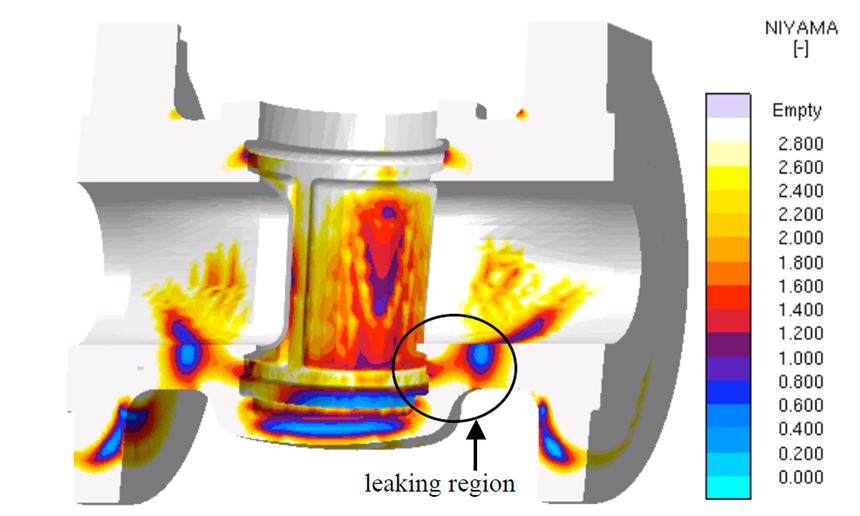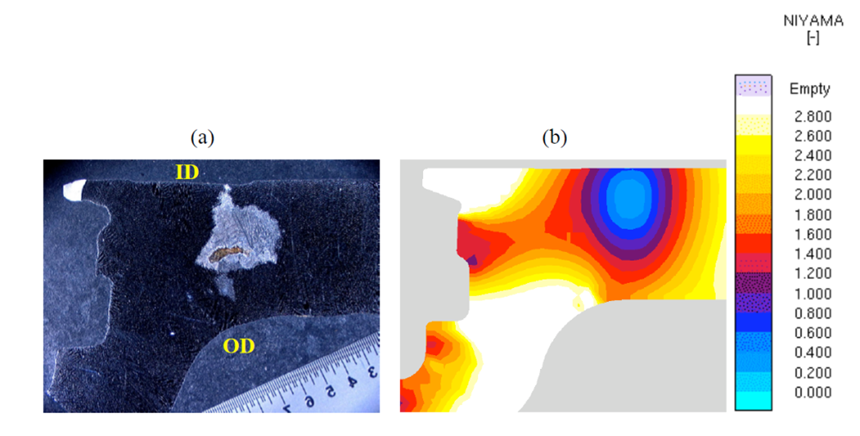Proactive Defect Detection with Simulation Software
Through-wall leakers in cast valve bodies often can be the end result of undetected defective areas created during the metal casting process.
#iiot #materials
Preventing In-Service Failures
The challenges of detecting the casting defects that can lead to valve bodies leaking in service are related to the nature of the defects and the limitations of the detection methods that are currently available.
In general, many of the defects that occur in the casting process are small, even microscopic in nature. Furthermore, these defects often are not located on the cast surfaces of the valve body, but instead are below the surface. Because of the relatively small and subsurface nature of many of these defects, the task of identifying them using nondestructive, or even destructive methods, is problematic. Even castings ordered to the highest achievable quality standards available may contain such defects unbeknownst to the casting buyer or end user.
And even though the defects are often relatively small and subsurface, these defective areas can compromise the material properties of the cast component and subsequently cause localized mechanical failure of the material. In addition, localized corrosion, no matter how microscopic, can lead to the formation of a passageway that extends from the internal cast surface to the external cast surface, causing a leak.
Casting Defects Related to Valve Performance
Common defects that may affect the performance of valve bodies include microporosity, gas porosity, inclusions, hot tears or cracking, and sand burn-on.
One of the most common causes of in-service failures for valve bodies is microporosity, or microscopic pores in cast materials. This microporosity, which can form during the solidification process of various cast alloys—including all steel, stainless-steel, nickel-based and aluminum castings—has traditionally been difficult to detect prior to failures in service.
Inclusions, which are the product of the liquid metal oxidizing during the filling of the mold, can be extremely small in size and therefore equally difficult to detect. Hot tears are defined as localized failure of the material due to strains that occur while the casting is still partly liquid during the solidification process. While hot tears and cracks created during the casting process are often very large in size and therefore more easily detected, they can also exhibit themselves as very small and subsurface.
Finally, sand burn-on occurs when liquid metal is able to penetrate into the voids between sand grains that are used in the sand molding process. Although this defect may in some cases be more easily detected than other defects, the means of removing it often will require post-processing operations such as abrasive grinding that can also result in undesirable surface finishes in flow paths of the valve. This resulting rough surface finish may disrupt the flow conditions in service and may also provide nucleation sites for corrosion or excessive stresses to occur.
Limitations of Common Defect Detection Methods
Traditional non-destructive evaluation (NDE) methods of inspecting castings, such as radiographic testing (x-ray or RT) and ultrasonic testing (UT), often will fail to consistently detect microscopic defects.
Pressure testing (PT) usually will only identify such defective areas if they are of a nature that connects the inside of the pressure containing unit to the outside of it (i.e., the microporosity or other casting defect goes all the way through the casting wall). The reason that PT often fails to prevent in-service failures is because the casting defect may not go completely through the casting wall at the point in time when pressure testing occurs. In such a case, the casting may pass pressure testing, but could later leak if corrosion in the area of the defect occurs during standard use of the valve.
The costs associated with these ineffective NDE testing methods are exorbitant. Furthermore, even when these methods of identifying casting defects are successful, they provide very little information about what actually caused the defect, and offer little input into the process of determining a potential corrective action.
Casting Process Simulation
The casting process simulation, which employs the use of complex numerical models to simulate the metal casting process using computer-based software, allows for the identification of casting defects to occur in a more reliable manner than the methods previously discussed. Even defects that are of a microscopic level, which may not be detected using any other method of NDE, can be identified using casting process simulation.
In addition to defect detection, the use of such technology also can be employed to understand the formation of casting defects and the conditions that cause them to form. This technical understanding of the defect formation then can be used to propose corrective actions to eliminate the defects.
Casting process simulation basically includes the importing of a three-dimensional computer aided design (CAD) solid model of the casting along with the details of the casting process (including the casting alloy, pouring temperature, rate of mold filling, etc.) to the casting process simulation software. The program then uses computational fluid dynamics (CFD) to track the flow of the metal during the virtual filling of the mold.
This mold-filling simulation will allow an engineer or technician to identify the conditions that could cause filling related defects such as re-oxidation inclusions or entrapped air caused by a turbulent filling pattern. After the simulation of the mold filling, the program then allows for the calculation of all heat transfer that occurs during the solidification of the casting.
It is from the solidification simulation results that software users are able to identify the conditions that would lead to the formation of microporosity, macroporosity and other casting-related defects such as burned-on sand. In addition to the filling and solidification simulations, methods of calculating the stresses and strains that occur during the cooling and heat treating of castings can also be realized. By considering the stresses and strains that occur in the casting process, further casting defects such as cracks and hot tears can also be identified and eliminated.
Summary
Due to the relatively small and oftentimes microscopic and subsurface nature of metal casting defects and the limitations of NDE methods that are commonly used to inspect for such defects, the task of preventing cast valve bodies from leaking prevents significant technical challenges. Casting process simulation technology presents a novel approach to identifying and preventing the conditions that cause casting defects to occur.
By utilizing the most advanced computational methods available, casting process simulation packages are able to provide casting buyers, designers and manufacturers a close look at what takes place during the casting process. Effective use of the information provided by casting process simulation can be employed to reduce the likelihood of through-wall leakers related to casting defects in valve bodies.
Roy Stevenson is ferrous applications manager at MAGMA Foundry Technologies, Inc. Reach him at rstevenson@magmasoft.com.
[1]Carlson, K.D., and Beckermann, C., "Use of the Niyama Criterion to Predict Shrinkage-Related Leaks in High-Nickel Steel and Nickel-Based Alloy Castings," in Proceedings of the 62nd SFSA Technical and Operating Conference, Paper No. 5.6, Steel Founders' Society of America, Chicago, IL, 2008.
RELATED CONTENT
-
Proper Care of Knife Gate and Slurry Valves
How to resolve—and avoid—field failures of knife gate and slurry valves
-
An Overview of ASME B16.34-2017
The content of American Society of Mechanical Engineers (ASME) Standard B16.34 is essential to those who deal with flanged, threaded and welded-end valves.
-
Valve Selection for Bypass of Control Valves: A Case Study
A bypass line including a bypass valve is typically installed to provide continuous operation in case of regular maintenance of a control valve.













 Unloading large gate valve.jpg;maxWidth=214)